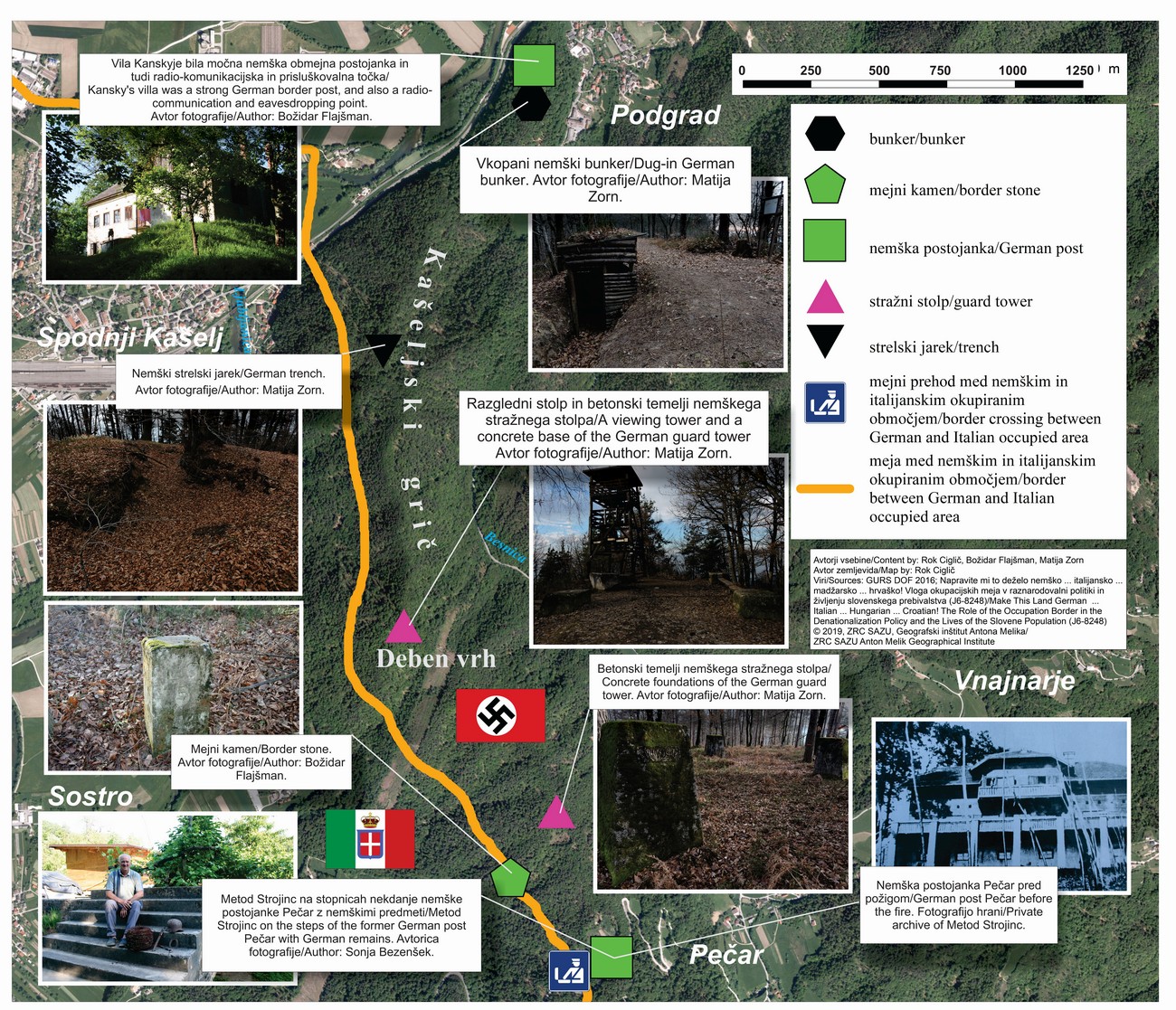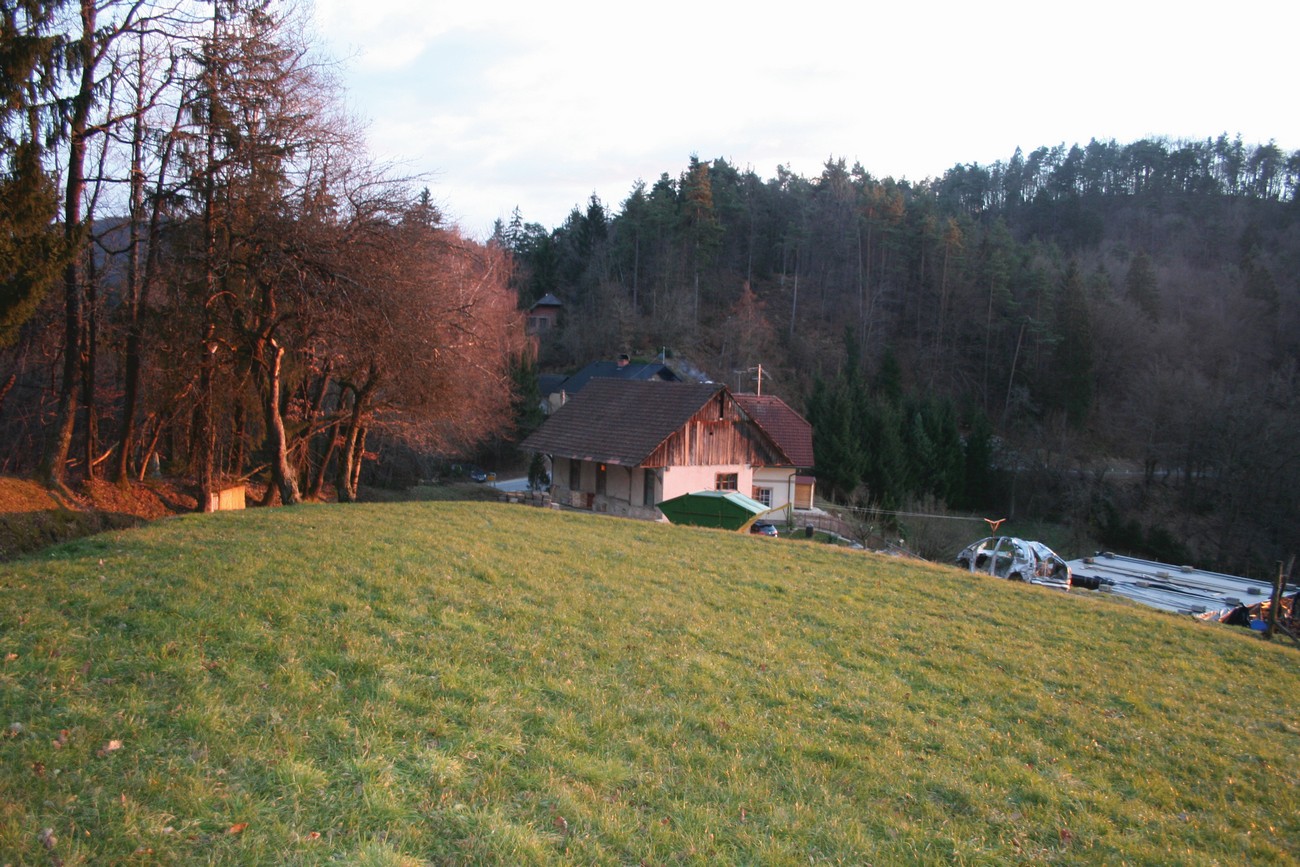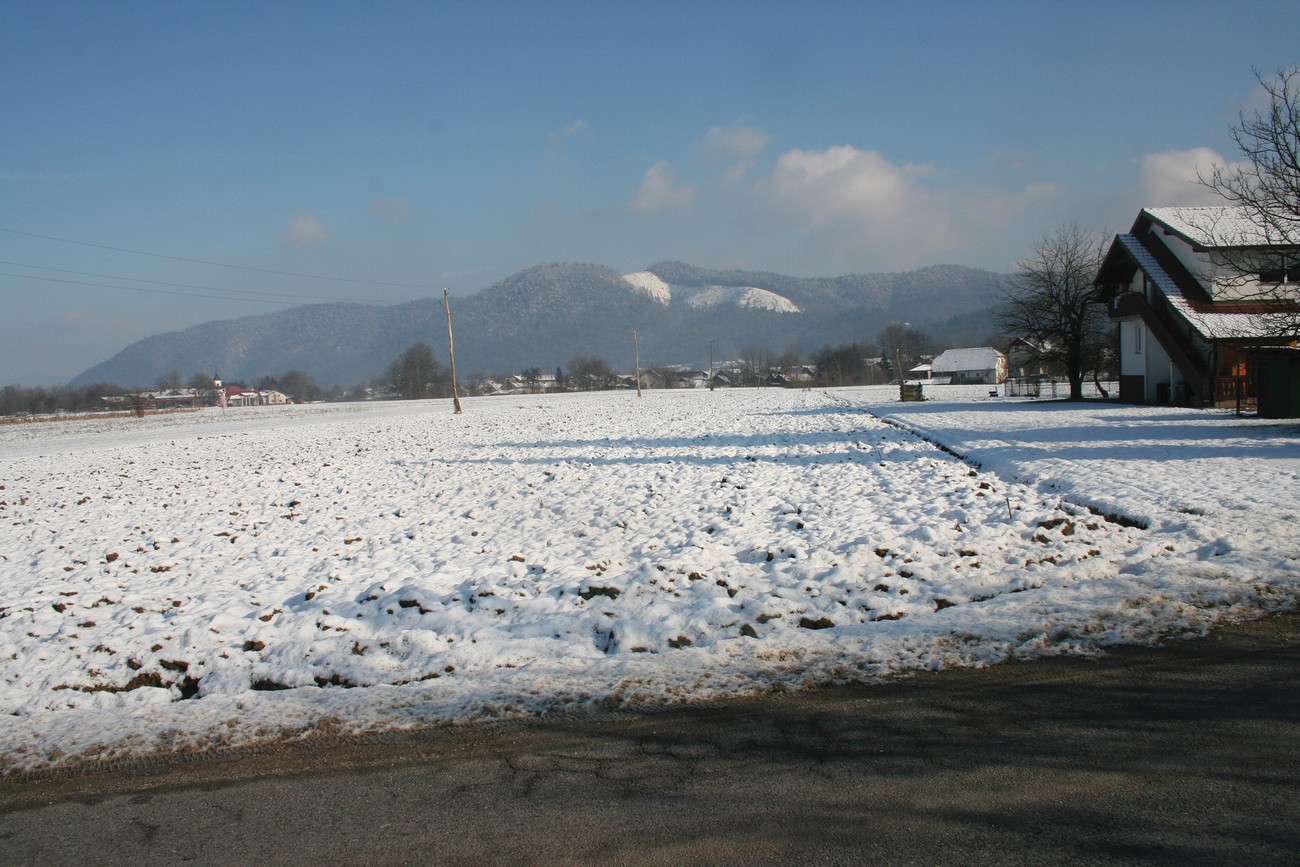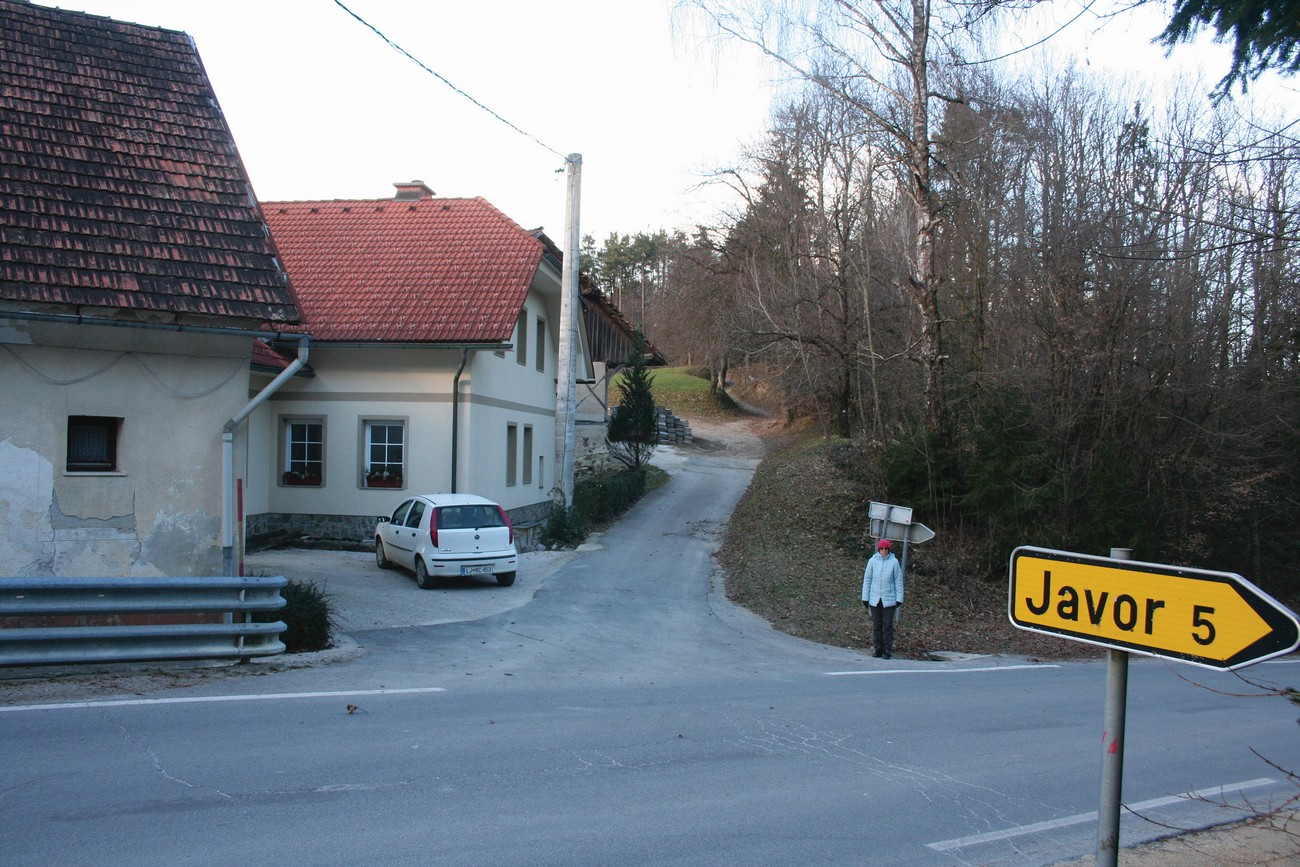Kašelj Hill (Kašeljski grič) is a ridge between the valley of Besnica Stream and the lower part of Ljubljanica River. During World War II, it marked the occupation border between Nazi Germany and Fascist Italy. At the Pečar road pass the Germans set up a large border post. The structure was built around 300 metres north of the road pass in the direction of Kašelj Hill in the immediate vicinity of the former inn. The lower levels were made from concrete, and wood was used for the upper levels. The post was attacked and burnt down by the Partisans. The Germans then moved to the nearby Pečar and Zupančič homes, moving their residents out. This time the post was well secured with bunkers and fire trenches, and a wide strip of forest was cut down around the area. A watchtower was erected on the peak of Debni vrh, whereas the second one, near Pečar, was never finished. The foundations of both survive well-preserved to the present day. A boundary stone stands in the immediate proximity of the second German watchtower near the Pečar house.
With an elevation of 530 metres, Debenji vrh (alternatively Debni vrh or Deben vrh) is the highest peak of Kašelj Hill. A nice view of the Ljubljana Basin and the hillside surrounding it is to be had from the wooden lookout tower on top. Next to it are the concrete foundations of the German watchtower. Running past is the Ostrovrhar Hiking Trail that takes us to Kansky’s Villa that used to be a strong German border post. Bunkers for border guards were dug into the ground between. Locals set out to restore one of the bunkers next to Kansky’s Villa and put up an information board. Kašelj Hill, 2019.



